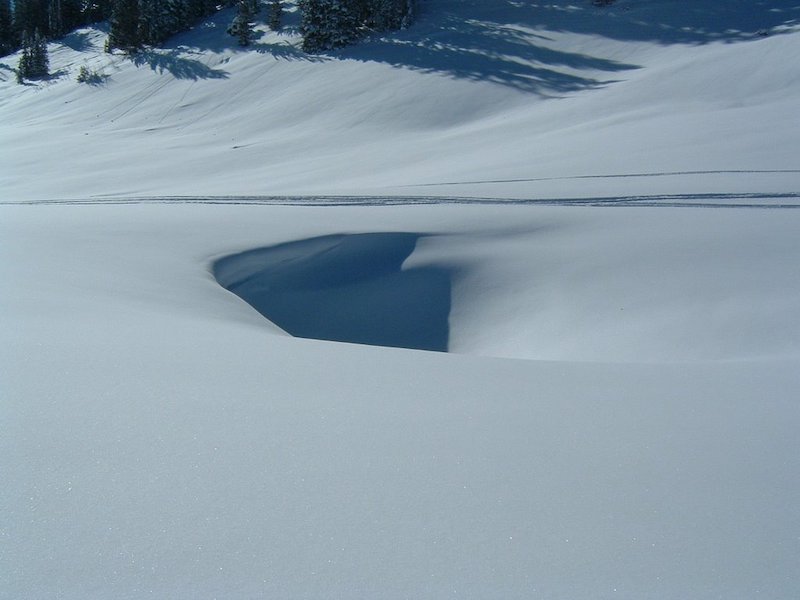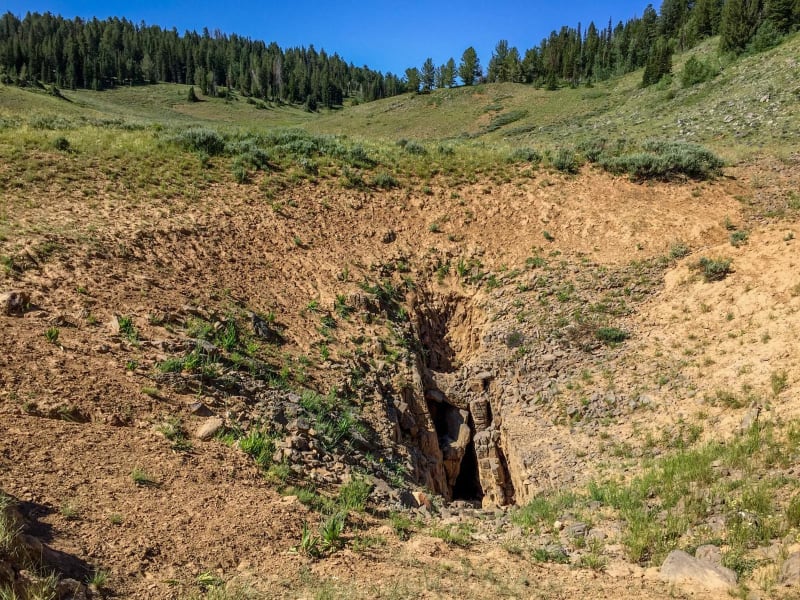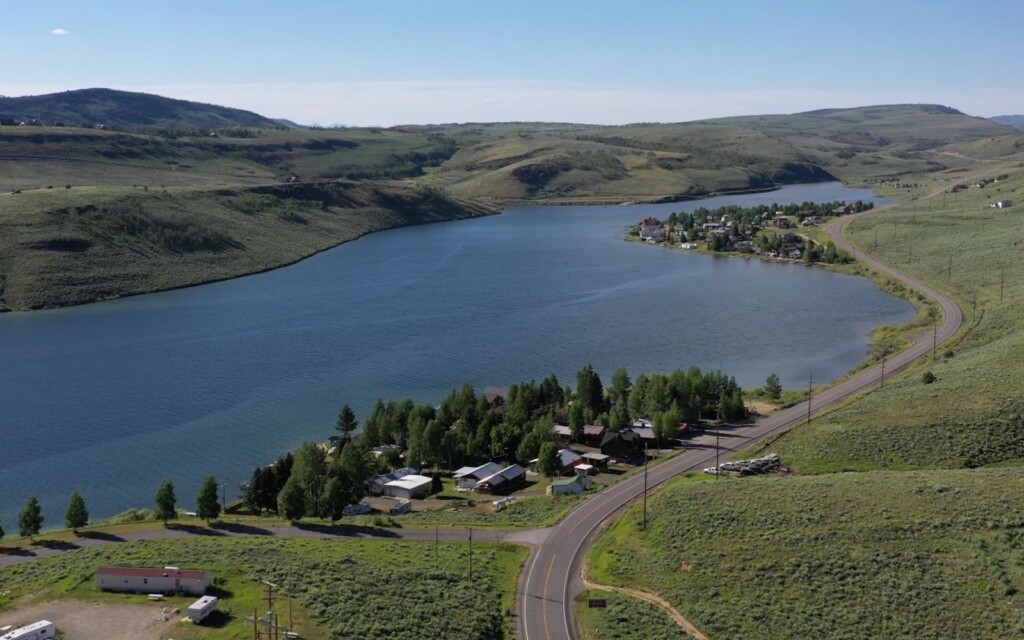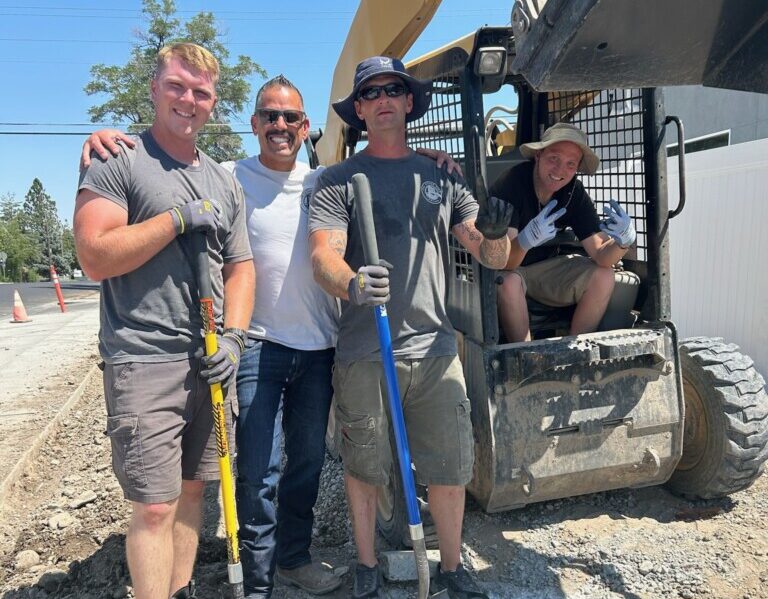
One of the coldest temperatures ever recorded in the lower United States happened in a place called Peter Sinks, near Logan, Utah.
Peter Sinks is a natural limestone bowl that sits at 8,164 feet above sea level in the Bear River Mountains of the Wasatch-Cache National Forest.
On February 1, 1985, the bowl reached the bone-numbing temperature of −69.3°F. It was the second coldest temperature ever recorded in the lower 48 states. The lowest was −69.7°F at Roger’s Pass, Montana in January 1954.
Tim Wright is a meteorologist with the Utah Climate Center at Utah State University. He says the temperature was taken with a temporary weather station.
“When they took the temperature, they sent it to the Bureau of Weights and Measures to verify it,” Wright said.
Wright has traveled many times to the area for research. He described what it is like.
“When you are standing at the bottom of the basin, it is almost like a giant amphitheater or bowl. There are steep walls in all directions. It is about half a mile wide and close to a mile long. It is 400 to 500 feet between the bottom and the lowest rim,” Wright said.
Wright describes what it is like to be at the sinks on a clear winter night.
“It’s extremely cold. It’s very surreal. It is calm. Silent. You don’t hear a thing but your own breathing and your footsteps in the snow. You can feel it get colder with almost every step as you go down into the basin. It’s almost like you’re walking into a lake of cold air,” Wright said.
So why does Peter Sinks get so cold?
Dr. Robert Gillies is the director of the Utah Climate Center and professor of meteorology at USU. He says he’s been to the sinks on a winter day.
“You don’t get the real extreme temperatures, but it’s still damn cold,” Gillies said.

He says there are three things affecting the temperature in the area.
“The first factor is elevation. Temperature decreases with elevation. The second factor is what we call an albedo, or highly reflective surface. When snow sits at the bottom of the bowl, solar radiation reflects off the snow into space.
“Finally, there is a radiated effect. Solar radiation is a form of short-wave radiation. When it gets absorbed at the surface, then it reradiates to space as longwave radiation. So, what happens is at the top of the bowl you get maximum radiation. The radiation cools the air at the top, it becomes colder and denser, then swirls down by gravity into the bowl,” Gillies explained.
Gillies says the sun usually breaks up such dense, cold air in the winter. However, at Peter Sinks, the sun does not get high enough in the sky to shine over the bowl so the air does not heat up.
“There isn’t enough heat to create convection or turbulent mixing; that’s why the air just sits there,” Gillies said.
Another interesting fact about Peter Sinks is that trees do not grow at the bottom of the basin.
“It is what is called a reverse tree line. Normally you go up in altitude to find the tree line but not there,” Wright said.
Wright says the area is a completely different environment in the summer. The temperature is more pleasant. There are lots of wildflowers and places to hike. Wright has camped on the ridge.
“I wouldn’t camp in the bottom because temperatures can still get below freezing during the summer. Even in July, I’ve seen the temperature get down to 19 or 20 degrees at night,” he said.
Gillies says he has worried visitors might vandalize the weather station there, but it has never happened.
“The worst thing is someone built a snowman beside the weather station,” Gillies laughed.
RELATED STORIES
Gold Prospecting in Utah: How to Find Gold in Utah’s Mountains
Mountains of Money: What Happened to Utah Ski Resorts?
The Top Five Lakes in the High Uinta Mountains to Visit
Exploring Utah’s Mountains and the Recreation Opportunities We Enjoy
Utah’s Little Cottonwood Canyon: A Gondola Wins, Granolas Lose
SUPPORT LOCAL JOURNALISM AND SUBSCRIBE TO PRINT MAGAZINE






